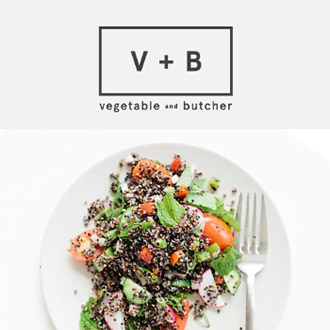The magnetic kitchen
Growing up, there was a crocheted sign hanging in our kitchen that said “No matter where I serve my guests, they seem to like my kitchen best.” And I think that’s true of most homes – the kitchen is a hub, a place to visit with the host, or do homework while mom’s cooking, or steal tastes from dishes in progress. With all of that joyful use, the kitchen also tends to attract…stuff. Already-crowded counters cluttered with utensils and appliances become second homes for cds, phones, hats, mail, class projects, and the little odds and ends that just don’t seem to have a home anywhere else.
For the cook, that’s extremely frustrating. No one wants to cook around and in between piles of things. Visions of perfect, clean kitchens taunt you on Pinterest; why don’t you have all those miles of sparkling countertop?! Well, the truth is that most people don’t have magazine photograph-ready kitchens, so you can take a certain amount of that self-blaming away right there. But there are a few ways that you can improve storage, utility, and space. All of the pictures in this post are from my kitchen, and to answer your first question – yes, it was that bad! When I moved last April I finally had a kitchen of my own (ok, of our own!) to fill, and it took a few months to figure out the flow of the space. It’s still not perfect, but ever since my deep clean/purge/organization in the fall it has been SO much easier to cook in! And my theory is that when you have a beautiful, functional kitchen space, you’ll want to cook more (which is my ultimate goal for you!). So start your spring cleaning early: here we go!
1. Food storage cabinets
You’ll have to take everything out – yes everything! – and evaluate what you have. You can go cabinet by cabinet, or pull everything out together and really think about what you want where…categorize:
- Type of thing by cabinet (baking supply, snacks, spices, canned goods)
- How often you use things: keep frequent grabs at easy eye level, and less frequent items higher up
- Size/height – don’t waste head space! Keep tall things in tall spaces and short things in lower shelves
Then use:
- Hooks – for hanging mugs
- Shelves – for taller cabinets
- Baskets or bins – for bags of things that don’t stand neatly
To the right here is my baking cabinet – now all the sugars are in the sliding bin bottom left, the baking powders/sodas/chocolates bottom right, and nuts/oats above that. That Before – wow! How would you get to anything in the back without creating an avalanche?
Here’s another one – you can see that some of the things from the top Before picture actually fit better in this cabinet; all my flours are now living together right next door to where the rest of the baking supplies are. The tall pitchers and containers have the height they need, the messy bagged items have a basket, and some of those little half-used packets of things were inevitably thrown away. Order from chaos!

2. Pots & pans
Again – take it all out! Evaluate what you use, what you need, and what is just taking up space. Donate the things you use less than annually or have duplicates of, then store the things you use frequently in a convenient way. Using stick-on hooks inside my cabinet doors changed the functionality of my storage here, because lids weren’t constantly clanking around and falling every time I grabbed my go-to skillet.

They also work well for hanging things (like these mesh strainers) that are too bulky to keep in drawers and utensil holders – just loop a rubber band through the end and make sure you place the hook so that the length of the item doesn’t extend past the bottom, or hit right at a shelf level:

3. Consider wall space & decor
If you don’t already have some food-themed art (or other art!) in your kitchen, check out Marcella Kriebel, a DC-based watercolorist who has beautiful prints for sale in lots of different sizes. I have her “Curcubitaceae” and “Allium” prints, and I love the color and feel they add to my kitchen.
 Think about shelving – this simple wall unit holds knives, spices, a towel, and even heavy cast iron pans. I used the hooks to dry herbs hanging from rubber bands for a huge boost in flavor quality to my store bought spice collection. If you’re lacking space (I had roommates for 7+ years, I know the space scarcity plight well!) then every little nook and cranny has potential. As you can see from our kitchen layout, that giant wall is totally open, but the floor space is too small to support adding a standing shelf or hutch. Wall mounting to the rescue!
Think about shelving – this simple wall unit holds knives, spices, a towel, and even heavy cast iron pans. I used the hooks to dry herbs hanging from rubber bands for a huge boost in flavor quality to my store bought spice collection. If you’re lacking space (I had roommates for 7+ years, I know the space scarcity plight well!) then every little nook and cranny has potential. As you can see from our kitchen layout, that giant wall is totally open, but the floor space is too small to support adding a standing shelf or hutch. Wall mounting to the rescue!
4. The refrigerator
Most fridges suffer from a lack of system – food tucked anywhere it fits! By implementing a few rules of thumb, you can avoid the “rotting in the back” phenomenon and keep things organized.
- Prepared foods/leftovers to the top: keep things that have a shelf life of 3-4 days front and center, reserving about 2/3 of the top shelf for those heat & eat items. A shelf might be handy here too, since you do want to utilize what is typically the tallest space available.
- Meats to the bottom: reduce drip risk in case they leak!
- Designate drawers by product: 1 for cheeses/cured meats, 1 for high humidity produce and 1 for lower humidity produce – read the guide here to figure out what is what!

And don’t forget the rotational powers of a turn table for dark corners in cabinets, pantries, and even the fridge! There are many of those on my Pinterest board on just this topic:
5. Do the drawers
 Even the most pristine homes have an “everything” drawer – it’s a very handy kitchen space! But most of your drawers could probably do with a good going-through at the very least (mine, left), and some easy, inexpensive partitions to create and keep order for little odds and ends.
Even the most pristine homes have an “everything” drawer – it’s a very handy kitchen space! But most of your drawers could probably do with a good going-through at the very least (mine, left), and some easy, inexpensive partitions to create and keep order for little odds and ends.
Look here for more ideas on how to organize drawers, use dollar store boxes or separators, and don’t forget the DIY option – just use some nice gift wrap to cover a mailing box! Amazon’s A1 size is small enough to fit in most drawers, but measure first, and either cut off or fold down the flaps to get them out of the way. This tutorial also shows you how to use office supplies to custom-build partitions.
My goal was to inspire you to get your kitchen in order and be excited about the process – so that ultimately you cook more often and with fewer headaches! Feel free to link to any of your favorite resources for kitchen organization in the comments below…my favorite thing in the world is a good before & after picture!












